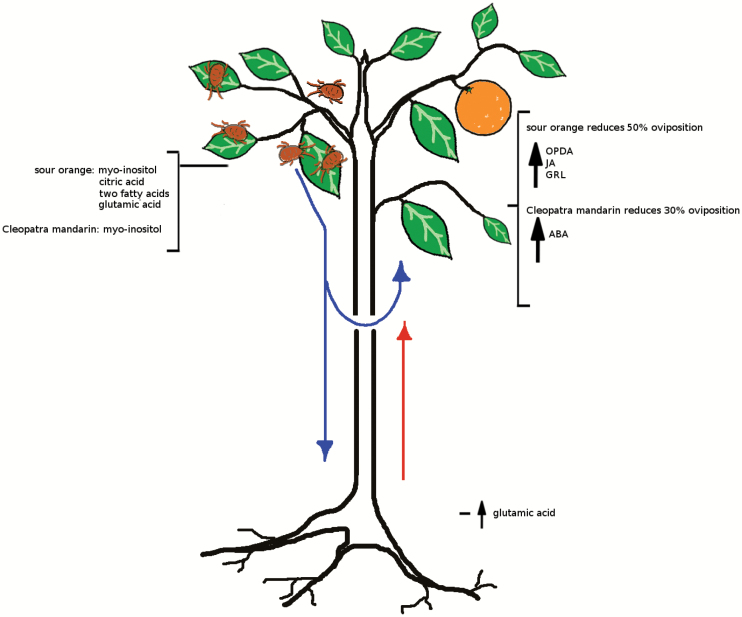Fig. 10.
Model for SR against T. urticae in citrus. Spider mite attack rapidly induces changes in the leaf efflux. The two rootstocks respond differently to mite infestation. Leaf efflux from Cleopatra mandarin contains high amounts of myo-inositol, whereas sour orange also releases citric acid, Glu, and two fatty acids. These compounds can move to distal leaves or to the root. Once the roots detect the signals from the infested leaves, the resistant rootstock, sour orange, increases the transport of Glu to the shoot. The distal leaves receive the signals from the roots and/or from the infested leaves and respond to a future attack. Consequently, sour orange increases the expression of GRL that activates the JA pathway (high levels of OPDA and JA) and reduces the oviposition of T. urticae by 50%. The reduction of T. urticae oviposition in Cleopatra mandarin is 30%, possibly due to an increase in ABA levels. (This figure is available in colour at JXB online).

